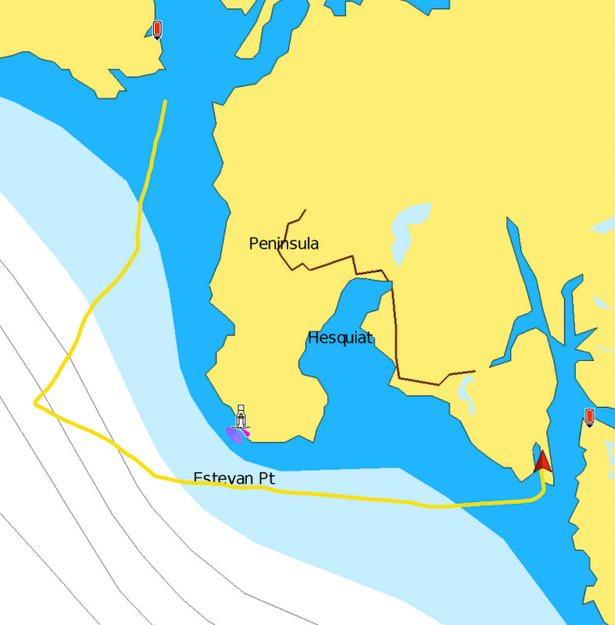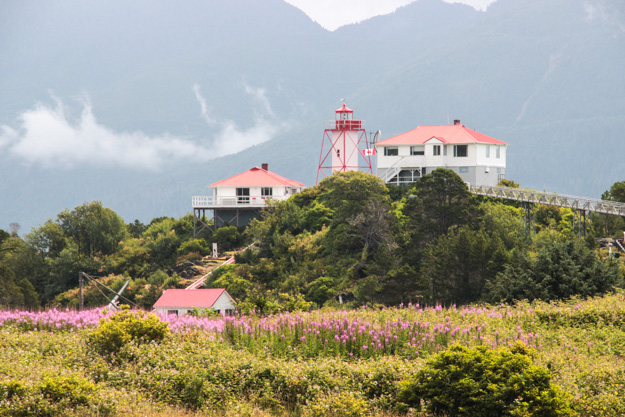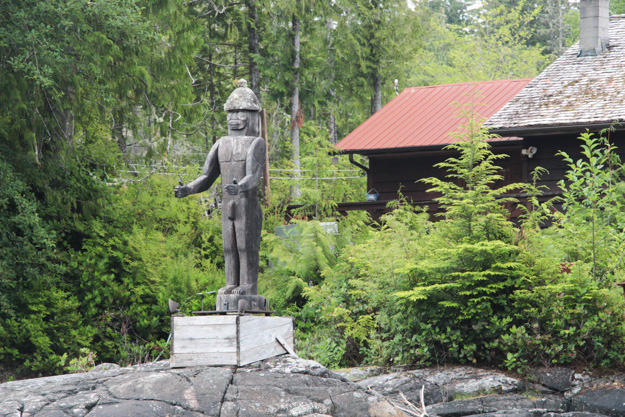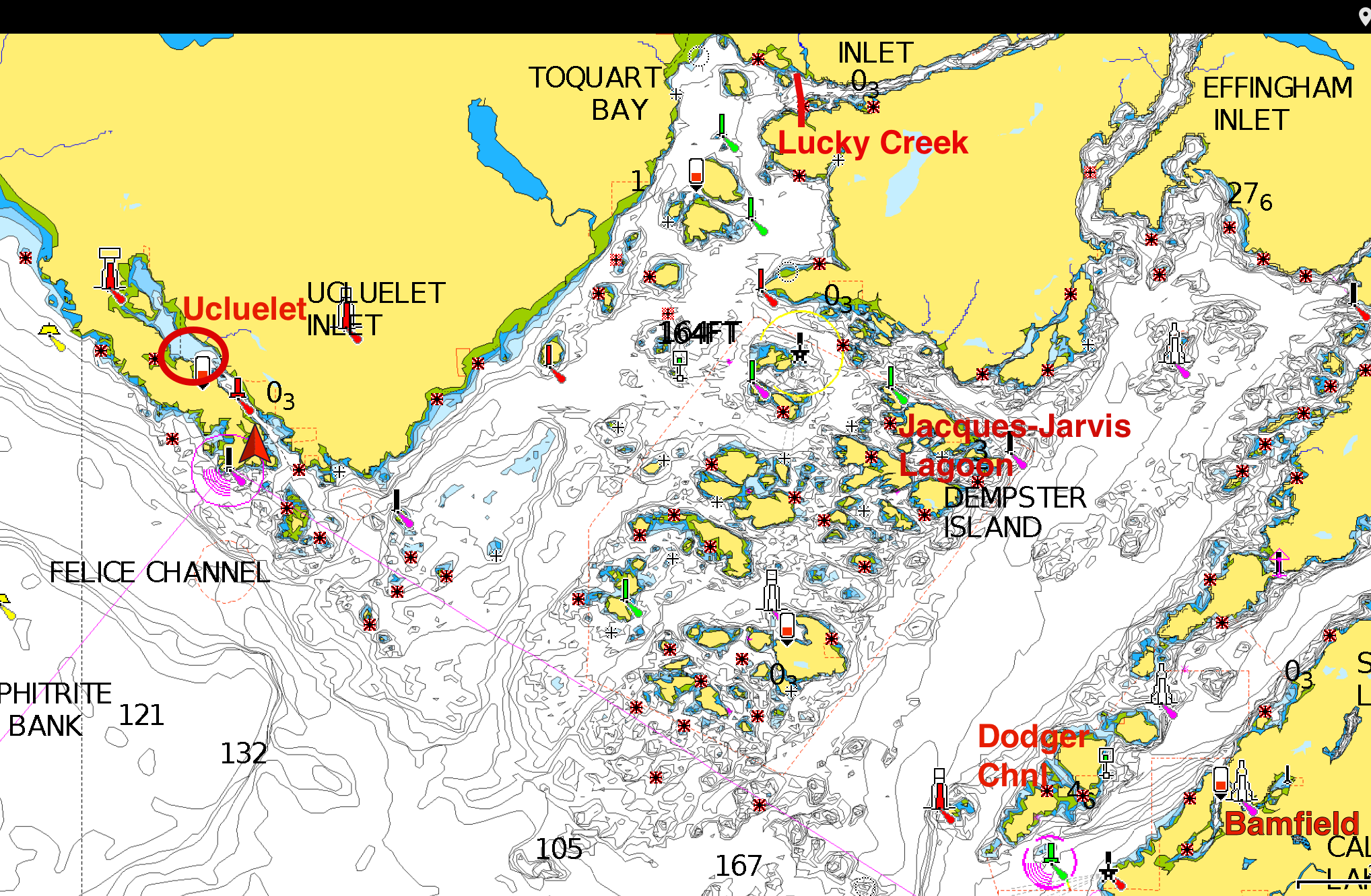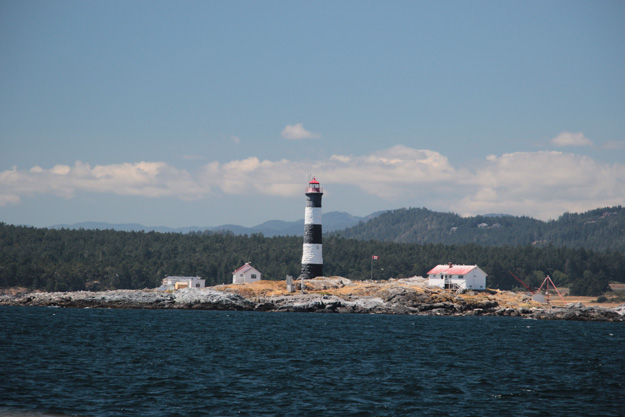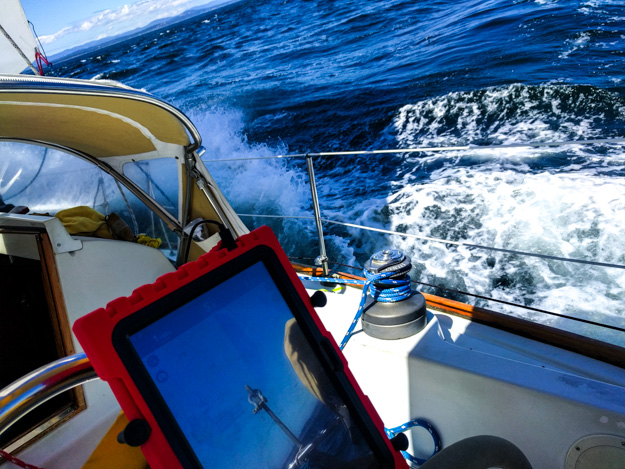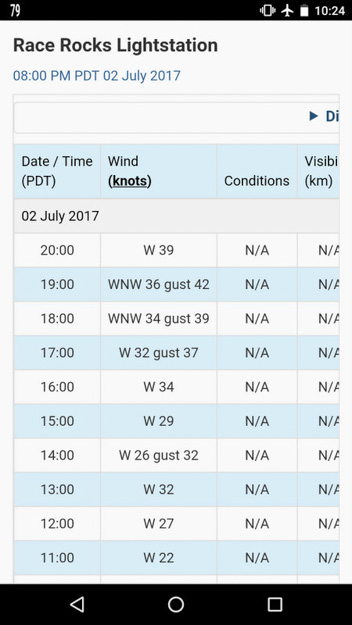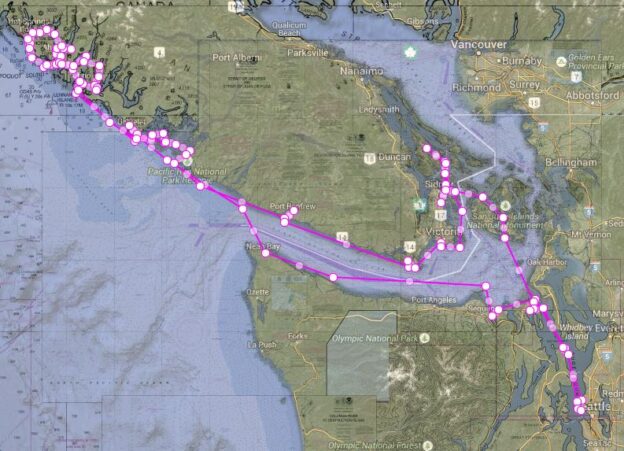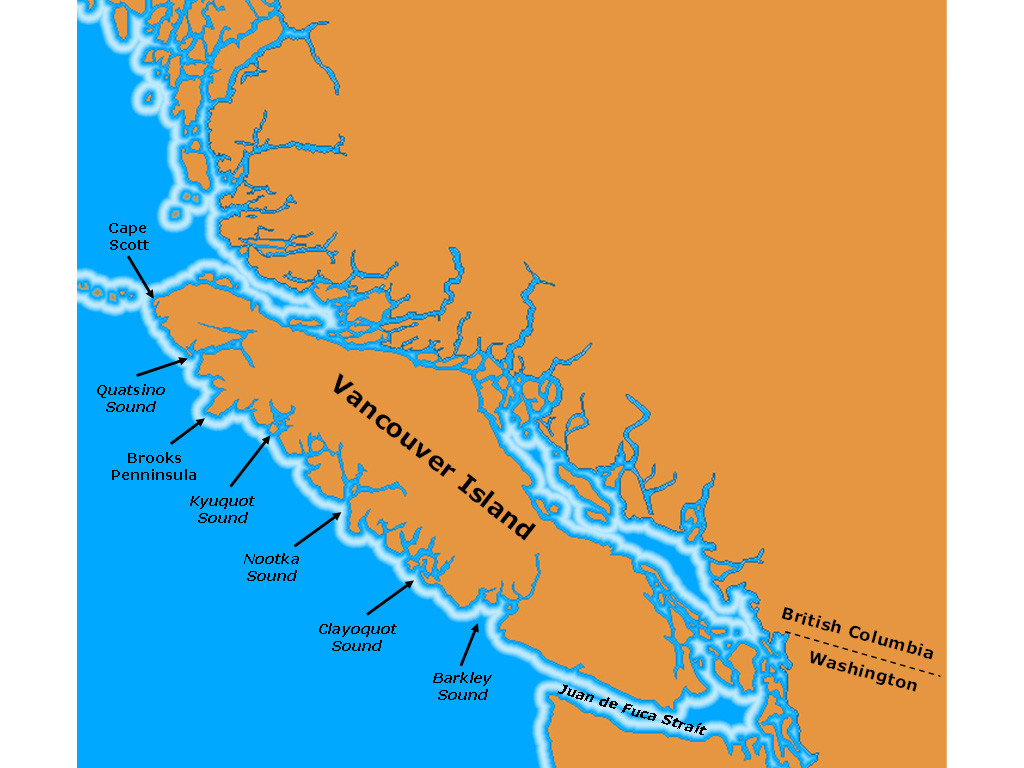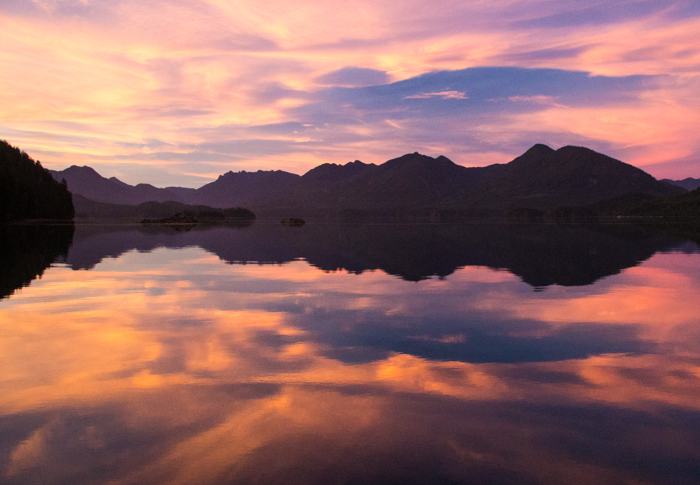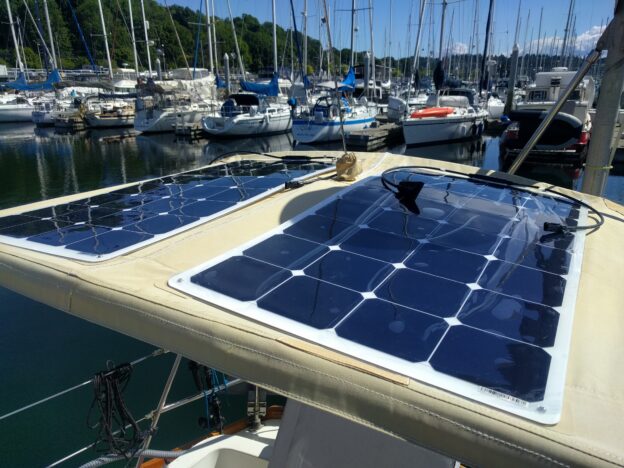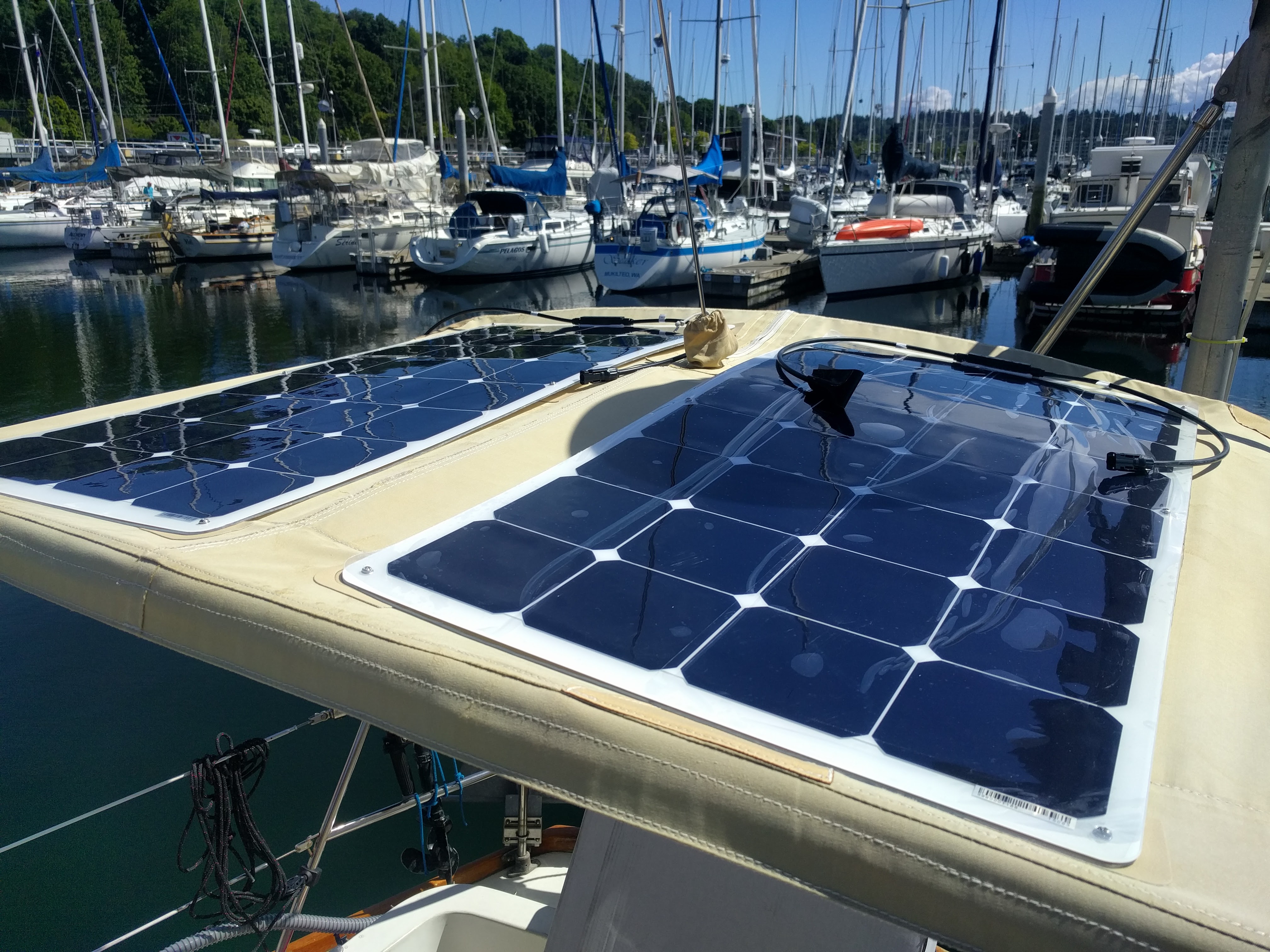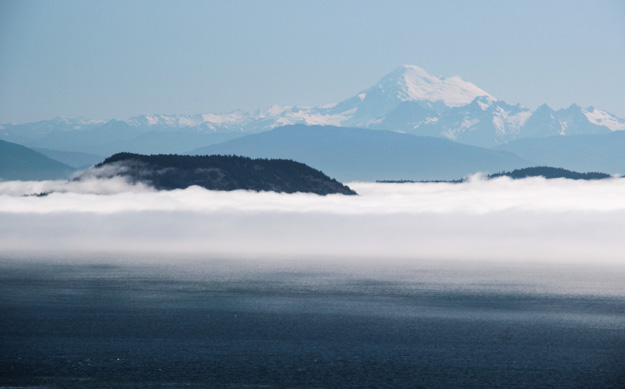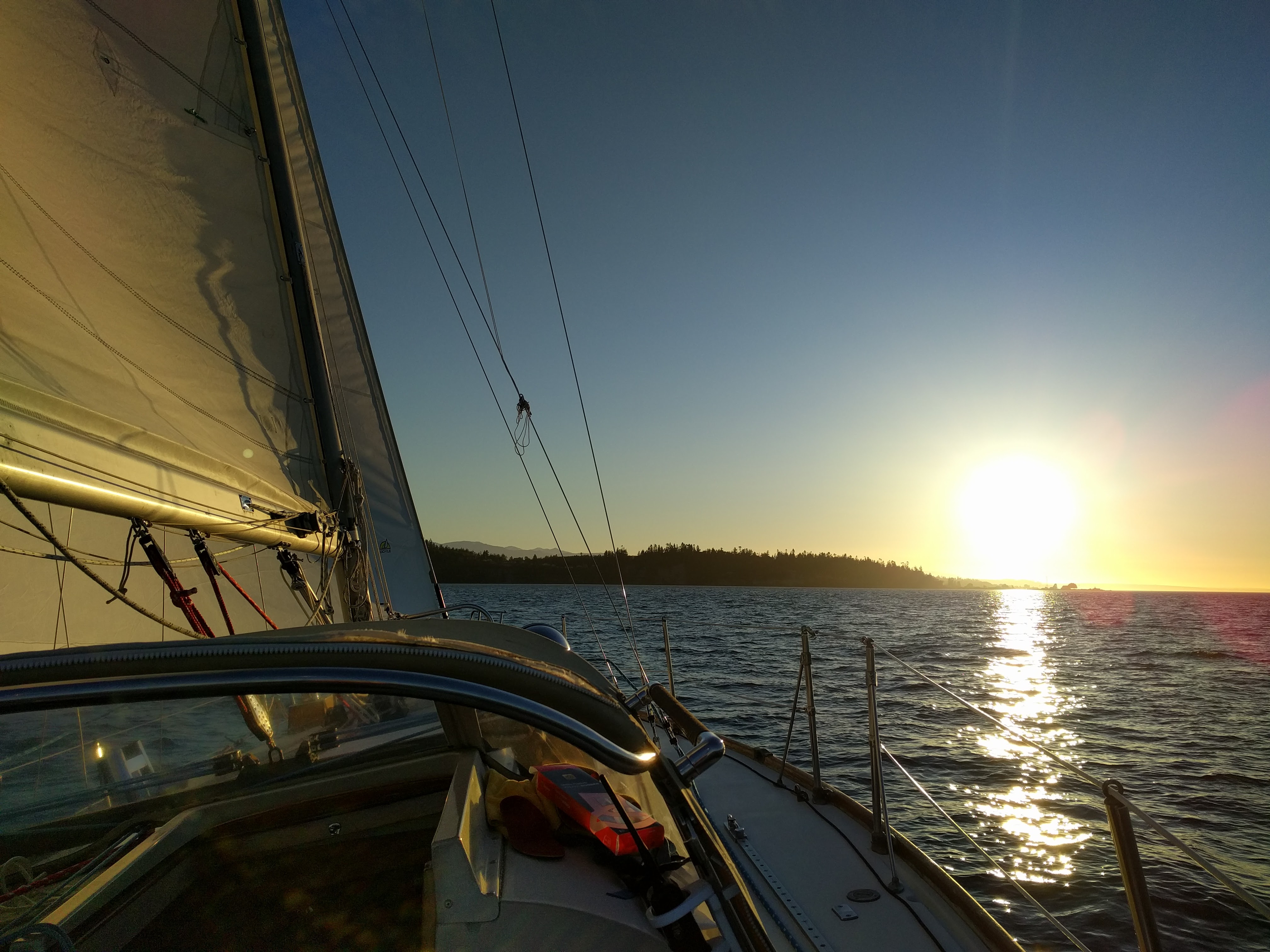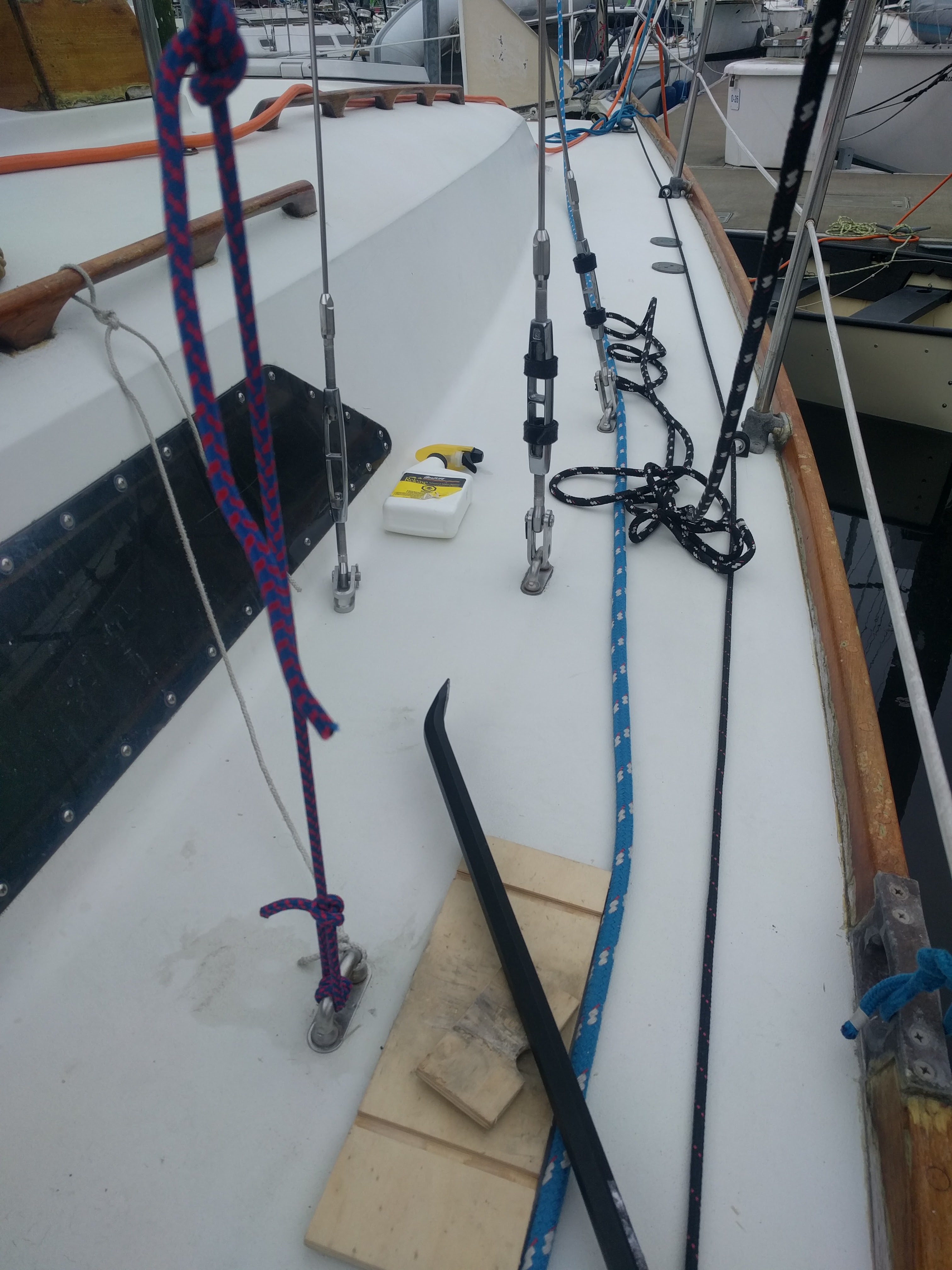After losing an extra day in Tofino due to the mouse that snuck aboard in the 4th St marina, we were eager to depart. A heavy morning fog was present out on the ocean though, so we waited till 10:30 for that to clear (plus there was no wind yet). We ended up having to motor all the way to Amphitheater Point outside Ucluelet – about 4 hours – but were able to sail with 8-10 kts that showed up in Barkley Sound. We’ve been finding the wind has been arriving later and is more short-lived in late July than it was the first half of July. Previously good wind started at 11am or noon, but now doesn’t start till 4 or 5pm.
This has made me wonder whether our July west coast cruise is perfectly mistimed by about 2 weeks. It would be better to start mid June when there’s still a chance of southerlies, and then return south in the 2nd week of July, when we had strong, consistent northerlies. Summer seems to have come early this year, and the last 2 weeks of July are resembling August weather – fog and low wind.
Still, sailing into Barkley Sound was fun, and I was reminded again of how spectacular Barkley Sound is – the sailing is always good there (at least all 7 days we were there during the month) and there are dozens of beautiful anchorages, many of them with no boats in them. We easily could’ve spent the whole month just cruising Barkley Sound, and I kind of wondered whether we should’ve done exactly that.
[This post took place from July 18 – 21]

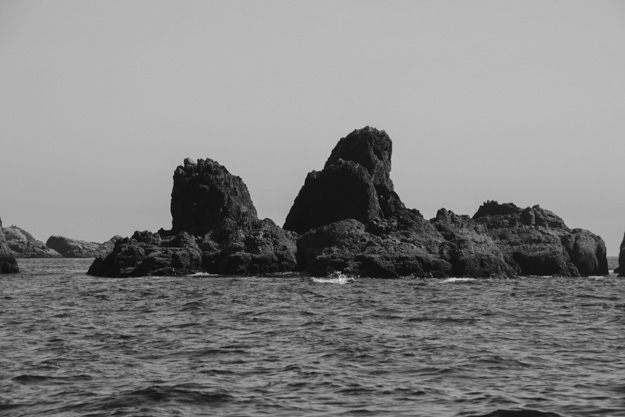
Rocks outside of Wouwer Island
Wouwer Island
Wouwer Island is on the outside of the Broken Group, and is a really beautiful anchorage – surrounded by rocks, islands, trees, views of mountains and crystal clear water in the anchorage. Most guide books say it’s for settled conditions only, and I’d agree if there’s more than 20 knots it wouldn’t be comfy. The winds were about 15 after we arrived, and we had some wavelets and slight rocking. Not bad, but certainly not as calm as some other Barkley Sound anchorages.
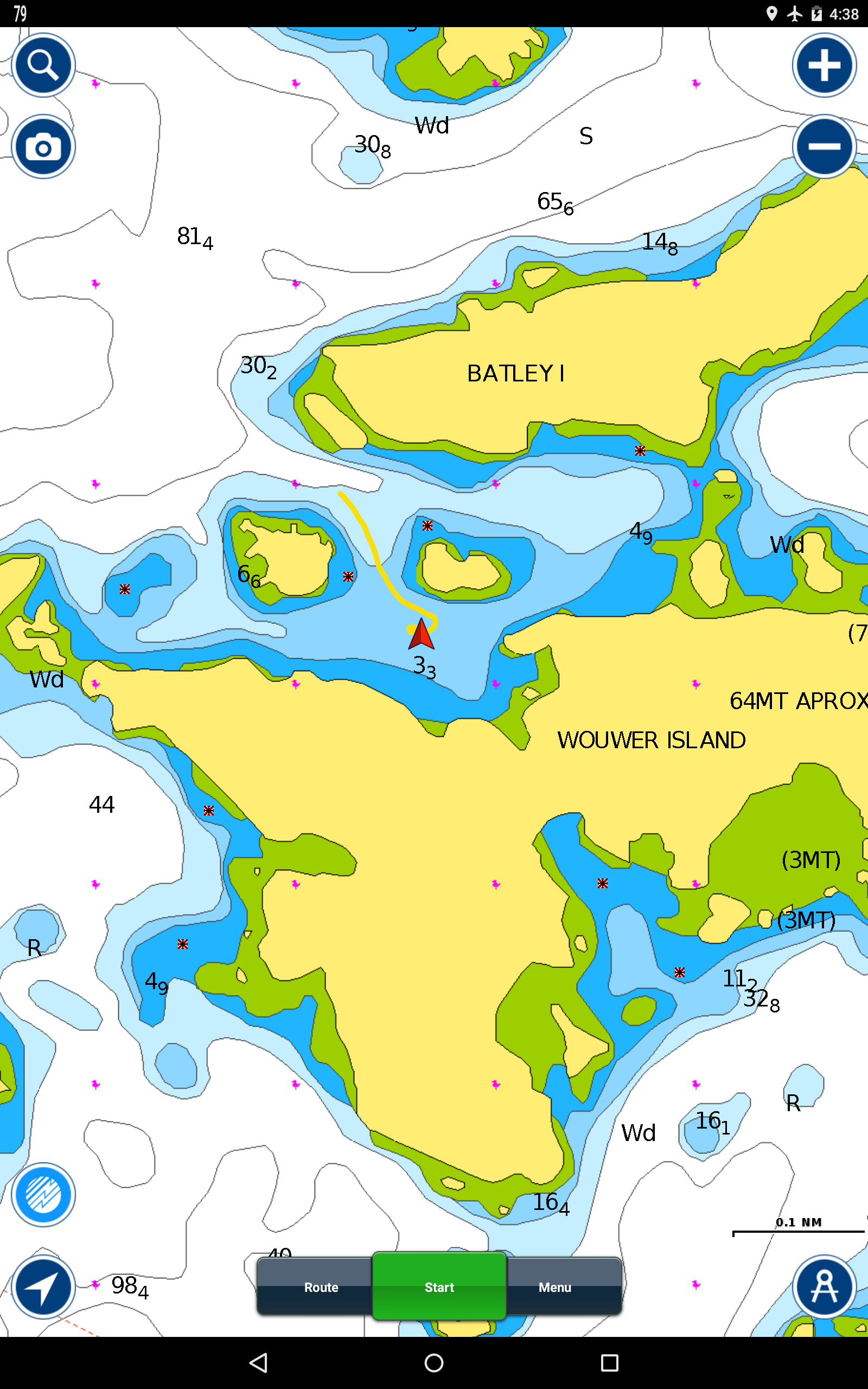
There’s plenty of room in here for one boat, but two would be tricky without stern ties.



